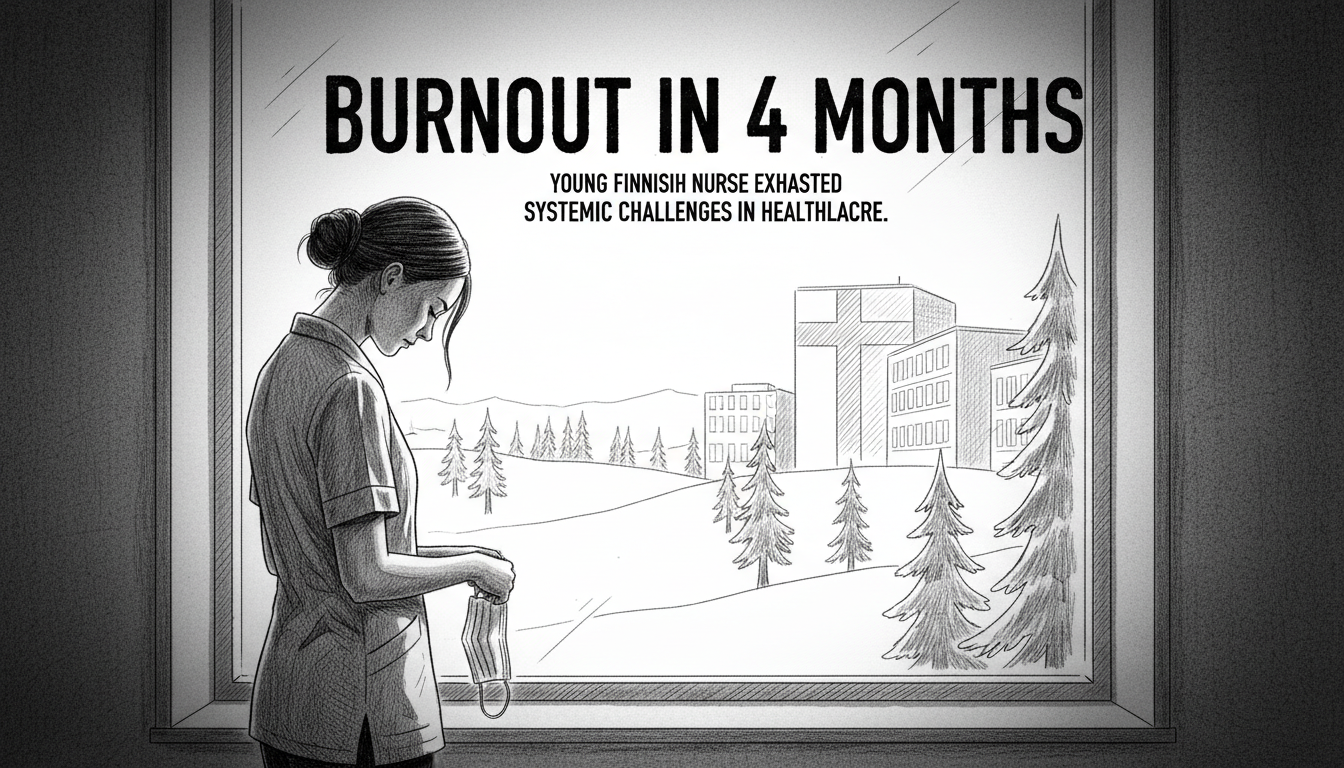A 24-year-old Finnish nurse experienced complete burnout after just four months in her dream job. Laura Martikainen believed she had landed her ideal position at a health center. She worked regular weekday hours from 8 AM to 4 PM with weekends off. Yet she still required extended sick leave by her fourth month.
Laura represents a growing crisis in Finland's healthcare sector. More healthcare professionals are experiencing exhaustion nationwide. This trend carries substantial costs for Finnish society and taxpayers. The nurse described feeling shame about her situation. She had only practiced nursing for four months before needing medical leave.
Her story reveals unexpected burnout triggers beyond shift work demands. Laura worked in primary care at a health center rather than hospital three-shift rotations. She now shares insights about aspects of healthcare center operations that remain invisible to ordinary taxpayers.
Finland faces a severe healthcare workforce shortage that compounds these challenges. The country struggles to retain nursing staff despite extensive training programs. Burnout among healthcare workers creates a vicious cycle. It reduces available staff while increasing pressure on remaining personnel.
This situation affects international healthcare professionals considering Finland. The Nordic welfare model depends on functional primary healthcare services. When nurses burn out quickly, the entire system faces strain. Patients experience longer wait times and reduced care quality.
Finnish healthcare centers handle routine medical care and preventive services. They form the foundation of the country's primary healthcare system. Nurses like Laura carry substantial responsibility in these settings. They conduct initial assessments, provide basic care, and manage patient flow.
The psychological toll of healthcare work often goes unrecognized. Nurses confront human suffering daily while maintaining professional composure. This emotional labor contributes significantly to burnout risk. Regular hours don't necessarily protect against cumulative stress.
Finland's government acknowledges the healthcare staffing crisis. Recent reforms aim to improve working conditions and attract more professionals. The success of these measures remains uncertain as burnout cases continue rising.
International observers watch Finland's approach to healthcare challenges. The Nordic country traditionally ranks high in healthcare quality assessments. Maintaining this position requires solving the workforce sustainability problem. Laura's experience highlights systemic issues needing urgent attention.
Healthcare professionals worldwide face similar burnout risks. Finland's situation offers lessons for other nations struggling with medical staff retention. The solution likely requires multiple approaches including better mental health support, reasonable workloads, and adequate compensation.
Laura's case demonstrates that even ideal-seeming positions can lead to exhaustion. The nursing profession demands both physical and emotional resilience. Supporting healthcare workers benefits both medical staff and the communities they serve.

